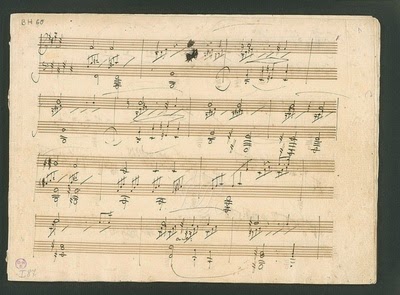Title: Piano Sonata No. 14 in C-sharp minor "Quasi una fantasia", Op. 27, No. 2
 |
| Ludwig van Beethoven |
 |
| Countess Giulietta Guicciardi (Beethoven's pupil) |
Composer: Ludwig van Beethoven
Completed in 1801
First dedicated in 1802 to his own pupil, Countess Giulietta Guicciardi
The Piano Sonata No. 14 in C-sharp minor "Quasi una fantasia", Op. 27, No. 2, popularly known as the Moonlight Sonata, is a piano sonata by Ludwig van Beethoven. Completed in 1801 and dedicated in 1802 to his pupil, Countess Giulietta Guicciardi. This is one of Beethoven's most popular compositions for the piano.
The first edition of the score is headed Sonata quasi una fantasia, a title this work shares with its companion piece, Op. 27, No. 1. Grove Music Online translates the Italian title as "sonata in the manner of a fantasy”. Translated more literally, this is "sonata almost a fantasy”.
The name "Moonlight Sonata" comes from remarks made by the German music critic and poet Ludwig Rellstab. In 1832, five years after Beethoven's death, Rellstab likened the effect of the first movement to that of moonlight shining upon Lake Lucerne. Within ten years, the name "Moonlight Sonata" ("Mondscheinsonate" in German) was being used in German and English publications. Later in the nineteenth century, the sonata was universally known by that name.
 |
| Autograph Score (http://en.wikipedia.org/wiki/File:Manuscript_of_the_Piano_Sonata_No._14_in_C-sharp_minor_Op.27-2_by_Beethoven.pdf) |
Music
Form
The sonata consists of three movements:
- Adagio sostenuto
- Allegretto
- Presto agitato
Adagio sostenuto
The first movement, in C sharp minor, is written in an approximate truncated sonata form. The movement opens with an octave in the left hand and a triplet figuration in the right. A melody that Hector Berlioz called a "lamentation", mostly by the right hand, is played against an accompanying ostinato triplet rhythm, simultaneously played by the right hand. The movement is played pianissimo or "very quietly", and the loudest it gets is mezzo forte or "moderately loud". The adagio sostenuto has made a powerful impression on many listeners; for instance, Berlioz said of it that it "is one of those poems that human language does not know how to qualify”. Beethoven's student Carl Czerny called it "a nocturnal scene, in which a mournful ghostly voice sounds from the distance". The movement was very popular in Beethoven's day, to the point of exasperating the composer himself, who remarked to Czerny, "Surely I've written better things.”
Allegretto
The second movement is a relatively conventional scherzo and trio, a moment of relative calm written in D-flat major, the more easily-notated enharmonic equivalent of C sharp major, the parallel major of the first movement's key, C sharp minor. Franz Liszt is said to have described the second movement as "a flower between two chasms”. The slight majority of the movement is in piano, but a handful of sforzandos and forte-pianos helps to maintain the movement's cheerful disposition.
Presto agitato
The stormy final movement (C♯ minor), in sonata form, is the weightiest of the three, reflecting an experiment of Beethoven's (also carried out in the companion sonata, Opus 27, No. 1 and later on in Opus 101) placement of the most important movement of the sonata last. The writing has many fast arpeggios and strongly accented notes, and an effective performance demands lively and skilful playing.
Of the final movement, Charles Rosen has written "it is the most unbridled in its representation of emotion. Even today, two hundred years later, its ferocity is astonishing.”
Beethoven's heavy use of sforzando notes, together with just a few strategically located fortissimo passages, creates the sense of a very powerful sound in spite of the predominance of piano markings throughout.
Moonlight Sonata (Full Movement) video:
Moonlight Sonata (Full Score) pdf file:
http://javanese.imslp.info/files/imglnks/usimg/1/19/IMSLP51726-PMLP01458-Beethoven_Werke_Breitkopf_Serie_16_No_137_Op_27_No_2.pdf
No comments:
Post a Comment